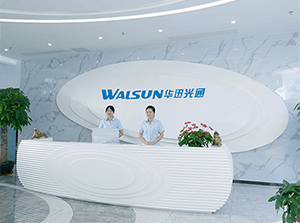PRODUCTS

- Class B and Class C SFP (Small Form-Factor Pluggable) refer to different types of transceiver modules used in networking equipment. The main differences between the two are as follows:1. Transmission Distance: Class B SFP modules typically support shorter transmission distances, usually up to 10 kilometers, while Class C SFP modules support longer transmission distances, up to 100 kilometers.2. Po1874

- A QSFP28 (Quad Small Form-Factor Pluggable 28) transceiver supports a total of four electrical lanes. Each lane can carry data at a rate of up to 25 gigabits per second (Gbps). The aggregate data rate of a QSFP28 module is thus 100 Gbps, combining the four lanes.The design of QSFP28 allows it to support high-speed data transmission, making it a common choice for applications such as 100 Gigabit Et2033

- Yes, OM3 (Optical Multimode 3) is generally considered better than OM1 (Optical Multimode 1) when it comes to fiber optic cabling for high-speed data transmission. Here are some key differences between OM3 and OM1 multimode fibers:Bandwidth and Data Rates:OM3: OM3 fiber has a higher bandwidth compared to OM1, allowing it to support higher data rates over longer distances. It is designed to support1475

- The throughput of a QSFP-DD (Quad Small Form-Factor Pluggable Double Density) transceiver module depends on the specific variant and the data rates supported by that module. QSFP-DD is a form factor designed to support high-speed data transmission, and it is used for various applications, including 200 Gigabit Ethernet (200GbE) and 400 Gigabit Ethernet (400GbE).The most common data rates associate939

- It seems there might be a bit of confusion in the terminology. Transceivers, such as SFP (Small Form-Factor Pluggable) modules, typically use different types of connectors, and LC and SC are examples of these connectors. However, the terms "LC transceiver" and "SC transceiver" can be a bit misleading.Here's the clarification:LC and SC Connectors:LC Connector: LC connectors2070


 CHS
CHS Walsun Mall
Walsun Mall










